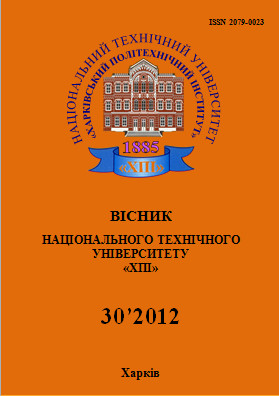Параллельная реализация алгоритма оптического распознавания рукописных символов на платформе CUDA
DOI:
https://doi.org/10.20998/%25xAbstract
В статье рассматриваются вопросы организация параллельных вычислений на платформе CUDA для задачи оптического распознавания рукописных символов с использованием искусственных нейронных сетей (ИНС). В работе используется ИНС прямого распространения с двумя скрытыми слоями. Рассмотрено два способа организации параллельных вычислений: один потоковый процессор обрабатывает данные одного символа, и все потоковые процессоры карты обрабатывают данные одного символа. Показано, что первый подход к распараллеливанию является более эффективным.References
Бодянский Е. В. Искусственные нейронные сети / Е. В. Бодянский, О. Г. Руденко. – Х. : Компания СМИТ, 2005. – 408 с.
Осовский С. Нейронные сети для обработки информации / С. Осовский. – М. : Финансы и статистика, 2004. – 344 с.
Боресков А. В. Основы работы с технологией CUDA / А.В. Боресков, А. А. Харламов. – М. : ДМК Пресс, 2010. – 232 с.
LeCun Y. The MNIST database of handwritten digits [Электронный ресурс] // Y. LeCun, C. Cortes. – 2009. – Режим доступа: http://yann.lecun.com/exdb/mnist/index.html.
Downloads
Published
2012-06-22
How to Cite
Колбасин, В. А., Христенко, И. А., & Христенко, Д. А. (2012). Параллельная реализация алгоритма оптического распознавания рукописных символов на платформе CUDA. Bulletin of National Technical University "KhPI". Series: System Analysis, Control and Information Technologies, (30), 121–126. https://doi.org/10.20998/%x
Issue
Section
SYSTEM ANALYSIS AND DECISION-MAKING THEORY
License
Copyright (c) 2016 Вісник Національного технічного університету «ХПІ». Серія: Системний аналiз, управління та iнформацiйнi технологiїAuthors who publish with this journal agree to the following terms:
- Authors retain copyright and grant the journal right of first publication with the work simultaneously licensed under a Creative Commons Attribution License that allows others to share the work with an acknowledgement of the work's authorship and initial publication in this journal.
- Authors are able to enter into separate, additional contractual arrangements for the non-exclusive distribution of the journal's published version of the work (e.g., post it to an institutional repository or publish it in a book), with an acknowledgement of its initial publication in this journal.
- Authors are permitted and encouraged to post their work online (e.g., in institutional repositories or on their website) prior to and during the submission process, as it can lead to productive exchanges, as well as earlier and greater citation of published work (See The Effect of Open Access).


